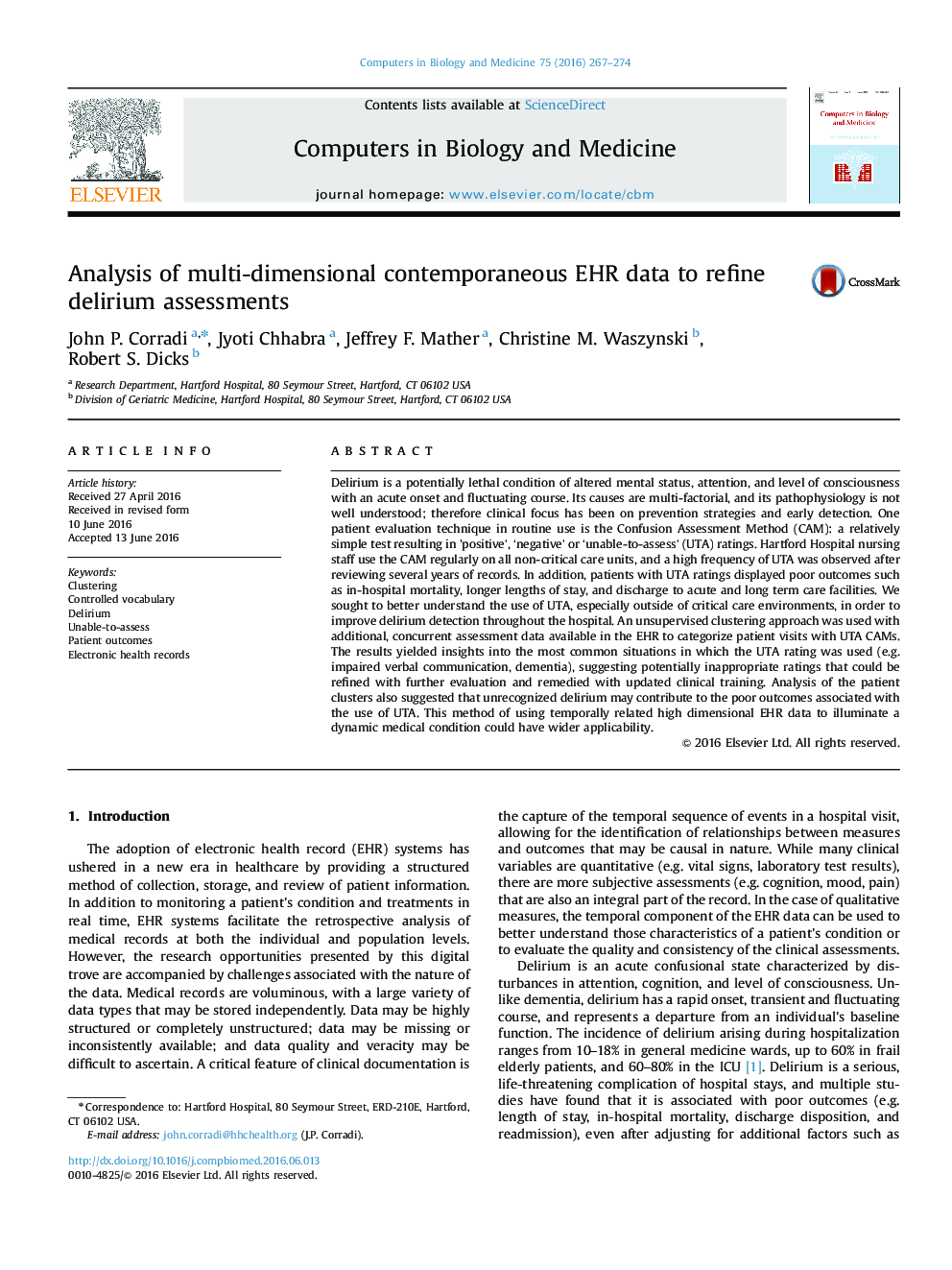| Article ID | Journal | Published Year | Pages | File Type |
|---|---|---|---|---|
| 504820 | Computers in Biology and Medicine | 2016 | 8 Pages |
•Leveraged concurrent EHR data to understand frequent unable-to-assess (UTA) CAMs.•Clustered non-ICU patient encounters using controlled vocabulary term frequencies.•Potentially inappropriate UTAs observed with communication barriers or dementia.•Outcomes associated with clustered patients may be linked to unrecognized delirium.•Approach identified opportunities for improved clinical assessments and training.
Delirium is a potentially lethal condition of altered mental status, attention, and level of consciousness with an acute onset and fluctuating course. Its causes are multi-factorial, and its pathophysiology is not well understood; therefore clinical focus has been on prevention strategies and early detection. One patient evaluation technique in routine use is the Confusion Assessment Method (CAM): a relatively simple test resulting in 'positive’, ‘negative’ or ‘unable-to-assess’ (UTA) ratings. Hartford Hospital nursing staff use the CAM regularly on all non-critical care units, and a high frequency of UTA was observed after reviewing several years of records. In addition, patients with UTA ratings displayed poor outcomes such as in-hospital mortality, longer lengths of stay, and discharge to acute and long term care facilities. We sought to better understand the use of UTA, especially outside of critical care environments, in order to improve delirium detection throughout the hospital. An unsupervised clustering approach was used with additional, concurrent assessment data available in the EHR to categorize patient visits with UTA CAMs. The results yielded insights into the most common situations in which the UTA rating was used (e.g. impaired verbal communication, dementia), suggesting potentially inappropriate ratings that could be refined with further evaluation and remedied with updated clinical training. Analysis of the patient clusters also suggested that unrecognized delirium may contribute to the poor outcomes associated with the use of UTA. This method of using temporally related high dimensional EHR data to illuminate a dynamic medical condition could have wider applicability.
Graphical abstractFigure optionsDownload full-size imageDownload high-quality image (181 K)Download as PowerPoint slide
